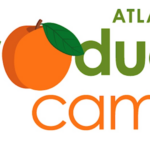Tina Rusnak is Director, Agility Transformation at ADP, and has had a variety of roles from caterer to QA Manager to Agile Coach. She has also been part of Agility Transformations at 2 large tech players – ADP and Intuit. She is also the author of the book 31 Agile and Scrum Coach Tips available on Amazon. Read on for some lessons from the Agile Journeys of these companies along with some very fun and useful tips from Tina for Product Owners below
You have had a variety of roles in software companies – from QA to Call Center Manager to Agile Coach. Tell us a little more about your journey.
I started my career working for the Department of Veterans Affairs Regional Counsel in Brooklyn, NY. I was headed to law school until I fell in love with technology, so instead of studying law, I began teaching the lawyers about their dial-up connections., electronic law books and online billing. After 10 years, I joined a very small start-up in Kennesaw, GA, which we sold and that was really exciting. It was the first online & mobile lead tracker for car sales. I later moved into technology consulting, a stint as a personal chef and caterer, then moved into QA and now coaching. I guess I have the habit of bumping into unexpected opportunities where at the core of it all there’s a need for improvements, big change or improved efficiencies. I’ve do have some entrepreneurial blood in my veins, so whether I’m on my own as a consultant or working in corporate, I look for the projects that have a “start-up” feel and when agile showed-up, it was a perfect fit.
What sold you on Agile? What was it about the methodology that you liked most?
I fell into agile while I was QA Manager; when I learned there was a process that could save my QA team from being pummeled at the end of every project I was “all-in”. Building software that no one wants or uses, delivering tools late to the markets was not what I was about. When I understood the research on waterfall vs. agile and my own experience, there was no going back.
I learned really quickly that Agile was actually not a process and that is what I really love about Agile. It is a mindset. It is all about people, the people who build software and lead teams, the people the teams serve and really it’s about building communities that serve each other.
Scrum, Kanban XP, even waterfall – these processes are all fun to teach , coach and use, but without actually being agile these all seem to fall short. I’ve seen lots of scrum teams who were NOT very agile and lots of waterfall teams who were very agile, yep, that’s right.
Talk a little bit about your book and the experience in publishing it.
My original intent for this first agile book was to create 365 days of tips, although I’ve probably given thousands of tips, I just could not get it done, so one Saturday I just decided to go for the “MVP” and get “31 Days of Agile & Scrum Tips” out. It’s actually a journal where each day I give some insight, asks some pointed questions and give the reader an opportunity to journal their answers. It can serve as a great reference to look back for new coaches, SM’s or leaders. “Look where we are today compared to just 31 days ago!” If you’re really dedicated and focused, in 31 days you can bring some great changes to your teams and organization. I also wanted to learn the publishing process on Amazon, so I’ll be ready to get my next agile book published quickly and easily.
You’ve worked with a lot of product managers. Tell me some things they do wrong in agile.
Product Managers and Product Owners have one of the toughest jobs when it comes to working in agile environments. Being the decision maker, the one who has to cut scope when time is up, is not a very comfortable position most product owners like to be in, after all who wants to be the one to tell clients and partners “No” or “Not now.”
For many new PO’s the reality of fixed date, fixed teams, flexible scope is a challenge. “I need it all! I’ve been asking for this item for 3 years!” In many cases I see, it can take a few releases for PO’s to understand the agile value proposition which is : “You get what your clients want now, not last year and you get to see it working and it’s ready to deploy now, not 12 months from now. It’s cool, because this is really what everyone wants – build the right product at the right time & cut the waste.
Another mistake I see many new PO’s make, especially if they are new to Product Management is that they have a hard time “owning” the product or even being fully empowered to make decisions. New PO’s will often ask, “Am I also responsible for release management, documentation and working with support?” While the answer is “yes”, PO’s need to be supported by their teams, their leaders, peers and other roles like project or program managers (if they have one). It’s not realistic to think that one person can handle the outside marketing, research, user and client meetings and work closely with the team on a daily basis; for small products or start-ups it’s possible, but medium to large scale organizations, this model falls apart.
Related to that is not making time for the team a priority. This is so critical, especially in the early stages when the team and the product owner are learning, not just about the product, its direction and what customers want & need, but also about each other.
Another common misconception new PO’s make early on is that they are not very interested in the “technology” the team uses to build the working software. I coach my PO’s that they don’t have to become tech experts, but since they are the decision makers about what gets into the team backlog, they need to be open to those conversations with development and learn what’s necessary to make smart choices. It’s like a kitchen upgrade. Sure you want that Wolf range and sub-zero fridge, but your contractor just told you your floor can’t handle the weight and you’re electrical wiring is 20 years old, you’ve got some decisions to make, best to make it as educated as possible.
What are some of the most effective agile strategies that you have seen? What are some of the most common challenges?
The most effective strategy is to take it slow. You need executive buy-in and I don’t just mean a signed check to start coaching and setting up scrum teams, leaders truly need to understand what’s coming, it wont be easy and there will be lots of tough decisions to be made a long the way. Also, having a solid change management program in place is vital along with HR support. When you implement Agile it affects everything and everyone, from performance management to continuous integration to sales and marketing. A key challenge is to keep teams and local leaders motivated and supported; coaches can definitely help in this area, but these folks on the front lines need to see & understand the value of agile and scrum and what’s really in it for them to make the investment in change.
It’s easy and fun to go to a scrum training class, but the learning truly happens in the sprints.
Where do you see Agile and product management going in the next few years?
It’s definitely still evolving, especially in scaled enterprise environments. Large, legacy products need to keep-up and move quickly to stay competitive, scrum can help, but it will only take you so far. I definitely recommend performing a technology assessment before starting-up scrum teams so both leaders and product management understand the gaps and create a strategy and budget.
Without a strong supportive infrastructure, product management may feel they’re being held hostage.
The partnership between Product management and product development is critical; both need to be focused on the same outcomes and goals, and work together through the changes agile presents to have ultimate success. As a coach, I see this as the direction we’re headed, but there’s still a lot to learn about scaled agile environments.
What are some of your favorite business and personal apps and tools?
Most teams and organizations I’ve coached use Rally, recently purchased by CA. I love the iPhone app, I can check all my teams from anywhere. I also keep my Audible app full of inspiring “reads”. Some of the titles I recommend to other coaches to help keep their mindsets open to learning are “Just Listen” by Mark Goulson, “Mastery” by Robert Greene, “The Obstacle is the Way” by Ryan Holiday and just recently “The Dip”, by Seth Godin. I love this one especially because it can inspire you to help your teams work through their pain and get to the next level, but it’s ultimately up to them. I also enjoy the Feng Shui Kua Compass, it’s great to see if the energy of any physical space is setup in a positive format. If you are thinking of creating an agile workspace for teams, have a look at a few Bagua office maps, it might help and its fun! Skype, Zoom and Dropbox are lifesavers when I’m on the go. My latest favorite app is “Headspace”. In just 10 minutes you can meditate, take a break and get back to work reenergized.
You can find Tina’s Book
31 Agile and Scrum Coach Tips on Amazon and contact her on Linkedin or Twitter
ProductCamp is all about learning from community and we are always looking for people from the Atlanta Product Management Community to feature on our blog. Let me (Tiyash) know on LinkedIn if you would like to be featured.





